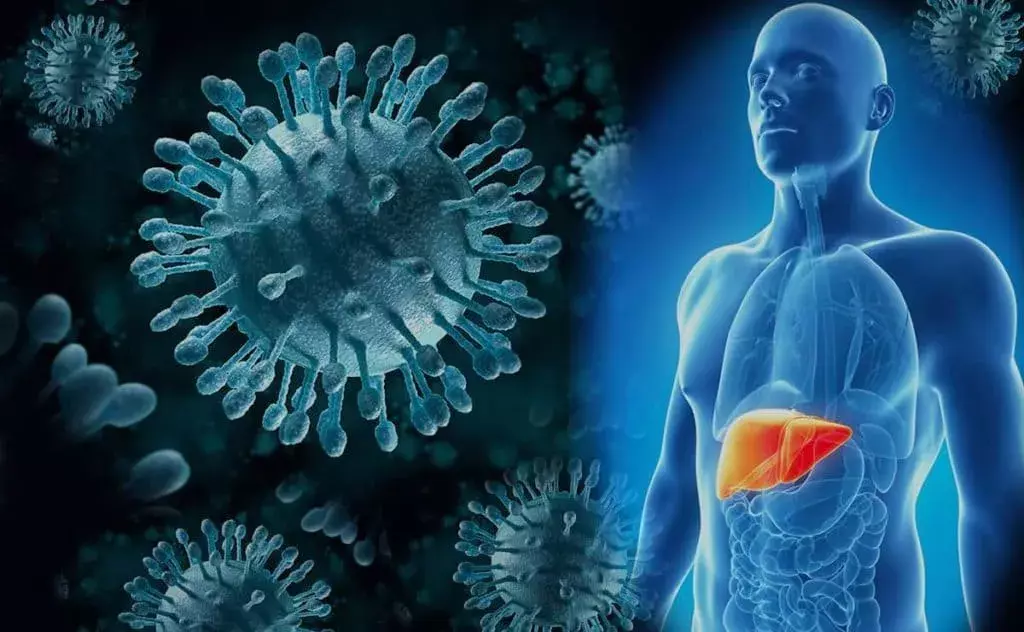
The World Health Organization (WHO) announced that a child died from the viral hepatitis virus of unknown origin, which emerged in England and spread in Europe and the USA.
In the written statement made by the organization, it was shared that one person out of at least 169 hepatitis cases seen in 11 countries died due to the virus.
Richard Pebody, Member of the WHO European Region's High Pathogen Threats Team, told Stat, a health news site broadcasting in the USA, that although hepatitis cases were not high, it had bad results.
Emphasizing that it is not yet clear whether a new epidemic will emerge from mysterious hepatitis cases, Pebody said, "It would be good for WHO member countries to investigate."
MYSTERIOUS CASE OF HEPATITIS
WHO, in its written statement on April 16, announced that 74 children in England had detected the hepatitis virus of unknown origin. In the statement made yesterday, it was stated that the cases had spread to 11 countries and increased to at least 169.
WHICH COUNTRIES HAS IT SEEN?
To date, 114 in the UK, 13 in Spain, 12 in Israel, 9 in the USA, 6 in Denmark, 2 each in Ireland, 4 each in the Netherlands and Italy, 2 each in Norway and France, and In Belgium, 1 person was infected with the virus.
What is the symptoms of hepatitis?
It has been reported that symptoms such as jaundice, diarrhea, vomiting and abdominal pain have been observed in the last month in children in whom the virus has been detected, and some cases had severe liver inflammation and were treated with liver transplantation.
It was noted that one of the cases was caused by contact with someone or several people with hepatitis, and it was not known where the other cases got the virus.
The definition of the disease as "mysterious" or "of uncertain cause" brought to mind the possibility of a new "global epidemic" while bringing the Covid-19 virus to mind.
Before being named, Covid-19 was described as a "mysterious lung condition".
HEPATITIS VIRUS TYPES
-
Hepatitis A
Hepatitis A virus It is very contagious. It is transmitted by fecal-oral (stool-contaminated food and water) and close contact. Vaccine is available. It is routinely applied in the pediatric vaccination calendar. It causes moderate or mild disease. Sometimes the patient does not even realize that he or she has hepatitis A. Almost always heals completely, does not cause chronic hepatitis and cirrhosis of the liver.
-
Hepatitis B
Hepatitis B virus Transmitted by infected body fluids (blood, sexually, injector, barber, dentist). Vaccine is available. It is routinely applied in the pediatric vaccination calendar. Hepatitis B infection resolves spontaneously in 95% of patients. Chronic infection develops in 5% of patients. Liver cirrhosis develops in 20% of chronic infections. Liver cancer develops in 10% of those who develop liver cirrhosis.
-
Hepatitis C
Hepatitis C virus Transmitted through infected body fluids (blood, sexually, injectors, barbers, dentists, tattoos, piercings). It has no vaccine. The infection heals spontaneously in 15-45% of patients. Chronic HCV infection develops in 60-80% of patients. The success of treatment of hepatitis C with new drugs has increased to 95%. In patients with chronic HCV, cirrhosis may develop 20-30 years later. Liver cancer develops in a minority of patients with cirrhosis.
-
Hepatitis D
Hepatitis D virus (Delta hepatitis) It is transmitted by infected blood. Infects with the hepatitis B virus. (Without the hepatitis B virus, the hepatitis D virus cannot replicate). It has no vaccine. Hepatitis D is extremely rare. Hepatitis D is transmitted through blood and body fluids, just like hepatitis B and C. Delta infection worsens hepatitis B and increases the risk of cirrhosis 2-3 times.
-
Hepatitis E
Hepatitis E virus is transmitted from water that is heavily polluted with feces. Therefore, it is common in undeveloped areas and unhealthy environments. It has no vaccine. Hepatitis E does not become chronic. Travelers traveling to countries with poor sanitation and drinking water control are at risk.
